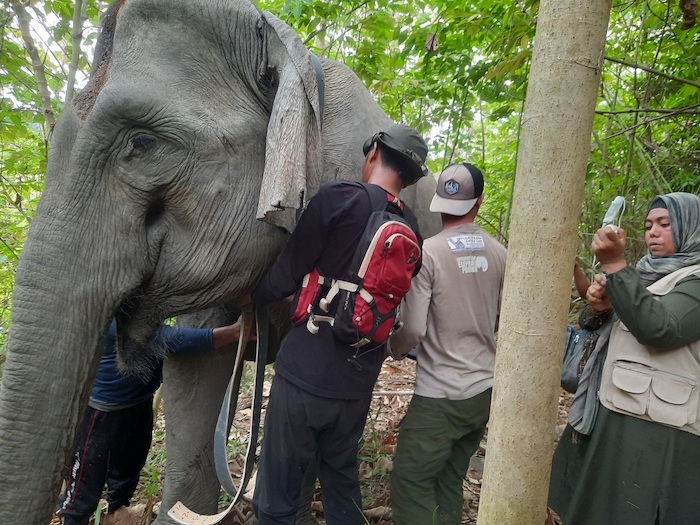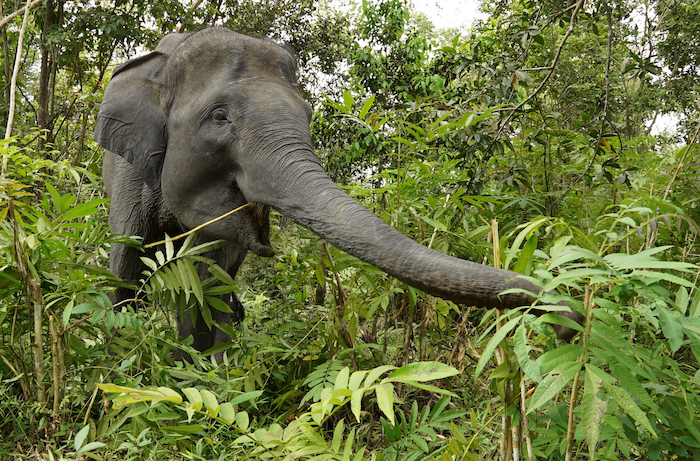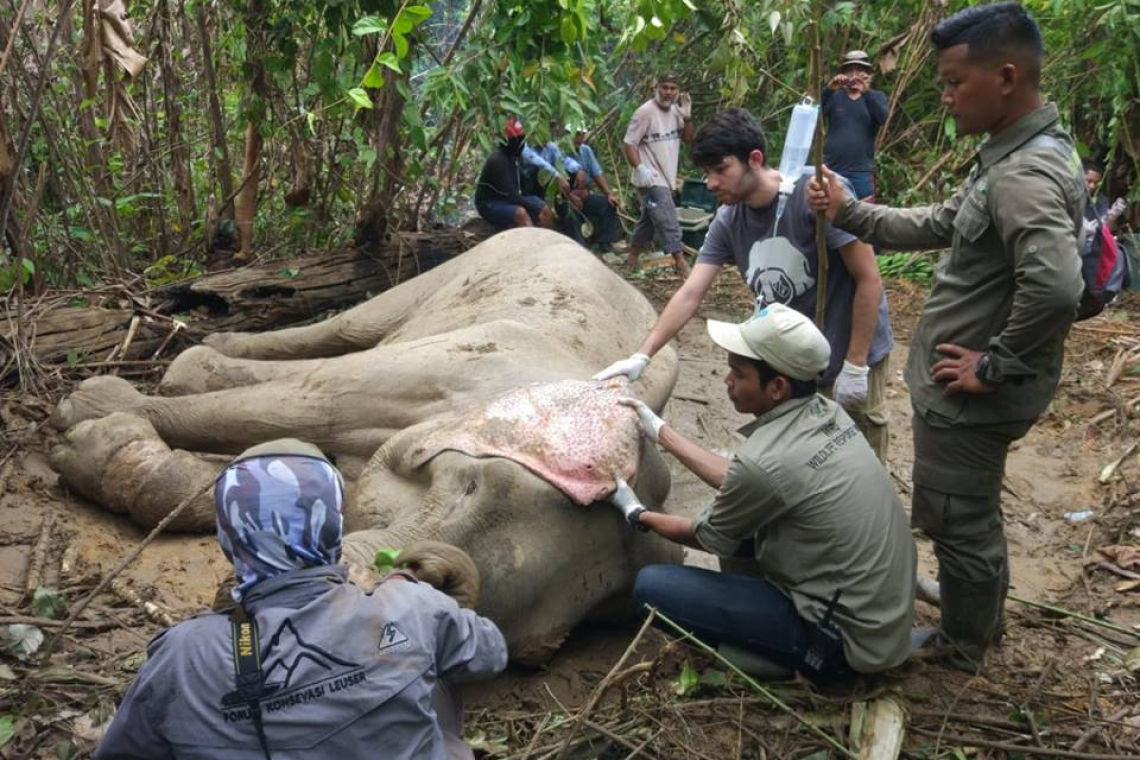The Sumatran elephant and its battle for survival.
On the island of Sumatra, a battle for survival is taking place. The Sumatran elephant (Elephas maximus sumatranus) is facing an Extinction crisis. Listed as Critically Endangered, estimates are that as few as 1,500 remain in the wild. Besides ongoing habitat loss, one of their biggest threats is Human-Elephant-Conflict (HEC) and poaching.
Although the hunting of elephants was banned in Indonesia as far back as 1931, and the Sumatran elephant protected under Indonesian law, poaching nonetheless remains a considerable conservation threat. This can be motivated by HEC with local communities as they both struggle to survive in remaining areas left from the expansion of unsustainable monocultures by large multinationals, or by criminal syndicates looking for ivory of the mature male’s tusks.

In addition, elephants are often injured and killed as a by-product of illegal poaching of other wildlife. In the last few months alone, there have been several reported cases of illegal poaching of Sumatran elephants. In November last year, a one-year-old elephant died after losing half its trunk caught in a poacher’s snare. Earlier in July, an elephant was found beheaded and its tusks removed after being poisoned.
Many cases often go unreported, and perpetrators more often than not go uncaught. Even when caught, the prosecution can be a lengthy and drawn-out process, and sentences light contrary to the lasting impact inflicted on remaining elephants.
In January this year, following a lengthy investigation, a dozen poachers were jailed by an Indonesian court over the 2020 killing of five Sumatran elephants and the illegal trade of their tusks. The elephants had been killed by electrocution and their tusks removed. The poachers only received sentences of between 10 months and three years.

The impact that poaching from criminal syndicates has on Sumatran elephant numbers is detrimental. Only the male Sumatran elephant has tusks, therefore with every male elephant poached, the future viability of the species is further compromised. It can take up to 20 years for a bull to reach full sexual maturity, where a cow accepts him for mating. That’s a long time to try and evade a poacher’s snare!
With remaining elephant populations existing in isolated and fragmented pockets of rainforest habitat, the continual loss of male elephants to poaching leads to genetic inbreeding amongst herds and the eventual decline of the species.
Formed in 2010, the International Elephant Project (IEP) is on a mission to ensure the survival of all elephant species in their natural habitat. A particular focus is the Sumatran elephant, given its conservation status.
Elephant conservation is a complex issue that requires support and funding in multiple areas to be successful. Working in partnership with local conservation organisations and indigenous communities, IEP provides technical and financial assistance to a range of critical programs to protect and conserve remaining Sumatran elephant populations at a holistic level. This includes fighting deforestation, mitigating HEC and deterring poaching and other illegal activities.
One of the key aspects of our conservation efforts is monitoring elephant herds and protecting their rainforest habitat through ranger patrols. Employing local people, Wildlife Protection Units (WPUs) patrol protected habitat areas to deter illegal activities such as encroachment, illegal logging and poaching. A core component of their work is the removal of snares, which can cause horrific injury and death to elephants and other Critically Endangered species, including Sumatran tigers.
Using GPS tracking, drones and other telemetry devices, we are also monitoring the movement of Sumatran elephant herds. This is not only to mitigate any incidence of HEC with local villagers, where elephants may feed on and destroy crops and plantations, but also to study individual herds, their movements and their behaviours.
Dr Alexander Mossbrucker, Field Manager for the International Elephant Project, is currently managing a two-year study into the vocalisations of wild Sumatran elephants with students from Gadjah Mada University. The project aims to develop technology to support anti-poaching patrols and human-elephant mitigation programs by using elephant vocalisations, including low-frequency rumbles, to detect and locate elephants from a distance.
In 2021 Alex published a book, Island Elephants – The Giants of Sumatra, which provides a comprehensive overview of the Sumatran elephant and the work being done by IEP to protect and conserve this unique and remarkable species.
Our work is made possible by the generous support of donors around the world who are passionate and committed to ensuring the future survival of the Sumatran elephant.
To find out more about the work of the International Elephant Project and to purchase a copy of Island Elephants – The Giants of Sumatra, visit www.internationalelephantproject.org.



